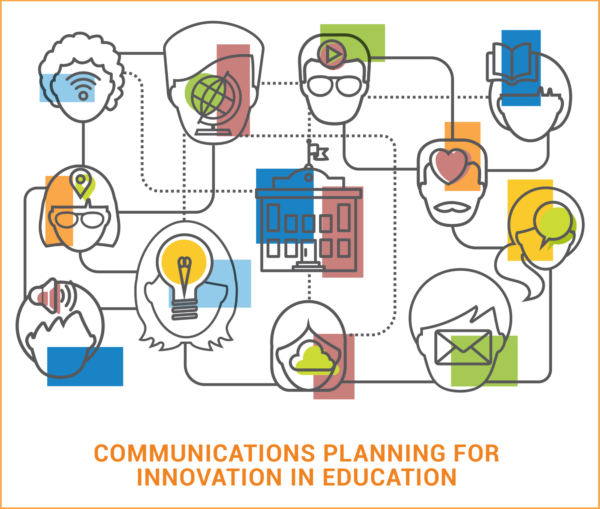
Over the past several years, our organizations have been deeply involved in the national movement towards blended and personalized learning, both as implementation experts and catalysts for innovation.
We have engaged with hundreds of districts between us and have witnessed a broad range of schools working to shift instructional practice to be more student-centered, data-driven, and mastery-based. What is the surprising “secret sauce” of their success? Communications.
School districts that develop thoughtful communications plans do more than just push important information out to their stakeholders. These districts build a culture of engagement, transparency, and trust that is critical for innovation both to take hold in the classroom and to be sustainable and scalable across many schools. Change can be difficult, and even scary, and districts need a strong culture of communications to succeed.
That’s why our organizations have joined together to release a new communications guide that provides a streamlined planning process, shares real-world examples, and offers up-to-date resources and artifacts.
What else have we learned?
-
Communications is critical to change management. Time and time again communications — or lack thereof — can make or break an initiative. For that reason, we encourage districts to start with strategy, rather than go straight to tactics, and emphasize building engagement and a culture of communications, rather than one-way communication.
-
Districts don’t have to reinvent the wheel. While we encourage each district to start by reflecting on their own context, we know that stories and artifacts can jumpstart thinking. For that reason, in our guide we’ve profiled the communications efforts of seven districts that are in different stages of implementation. Additionally, our appendix includes a bank that’s chock-full of examples from districts and schools.
-
Districts have different capacities for communications. While some districts may have a dedicated communications department, in other districts the folks charged with communications wear many hats. To scaffold our approach for districts who may need more help getting started, we’ve built out a bank of key messages by target audience. District profiles showcase many examples of ‘small wins’ that made a large impact.
-
Many districts aren’t starting from scratch. A few years ago when blended and personalized learning was a relatively new concept, most districts and schools were starting from square one. Today more and more districts are looking to refine or reboot their communications. We recommend districts tackle their work in chunks, as well as recognize the cyclical nature of communications. Test what works, iterate, and adjust.
We want your feedback and we hope you’ll share! Join the conversation on #PLComms and share your communications stories, artifacts, videos, and examples. From both of our organizations, thank you for the work you do on behalf of students, families, and communities.
Education Elements a national education consultancy, works with districts to build and support dynamic school systems that meet the needs of every learner, today and tomorrow.
The Learning Accelerator, a national nonprofit, is a catalyst to accelerate the implementation of high-quality blended learning across the U.S.
